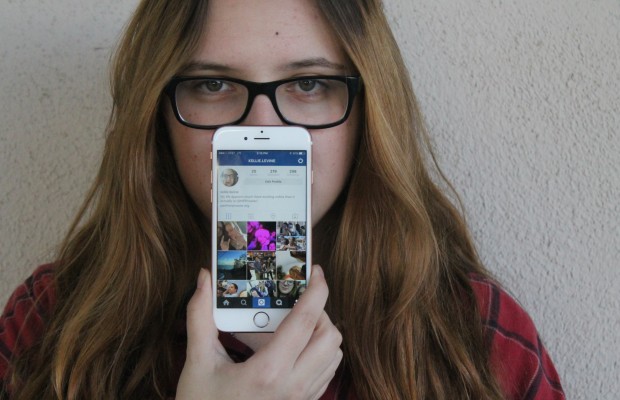Finstagram

Finsta (n) – a private Instagram account made under a variation of one’s name that promotes anonymity, shared only with trusted friends
synonyms: fake Instagram, private, P.I.
If you are one of the 300 million Instagram users, chances are you have been followed by, or asked to follow, someone’s private account. For people who are not familiar with the phenomena, these private accounts rose to popularity in Newbury Park during the summer of 2015, and have become a regular source of both entertainment and drama. But why do teenagers feel the need to create yet another social media account on the same platform? Well, that’s a loaded question.
First of all, being a teenager these days, it’s common practice to be warned about the dangers of the Internet and social media. We’ve all heard the tale of the person who lost out on a job or didn’t get into college because of some scandalous picture or Twitter rant. With all the pressure to preserve the purity of our names on the Internet, some teenagers have found a loophole. Rather than just avoiding putting those things into the world, attach them to a name that can’t be tied back to you.
While this line of thinking may be flawed in that most things can still be traced back to you, it represents a bigger problem being faced by teenagers in a time when we are being forced into the role of trailblazers, experimenting with how something as new as social media can affect upbringing. In an age where everything is shared, teenagers don’t feel like they can be themselves.
It’s not a groundbreaking notion that adolescents are insecure. It’s a well known fact that many teenagers feel the need to split their personalities in two. There is the public persona that is projected to the world in order to paint oneself in the best light, and then there is the private, often buried self that is shared with only close friends. With the introduction of private Instagram accounts, this duality is now transferring online.
On a public Instagram, there is pressure to have a good follower to following ratio, a feed that matches, clever captions, coordinating colors, consistent framing, and a number of likes that is tied to your worth. But on private Instagrams, followers are restricted to close friends who can be trusted, removing the pressure to follow the unwritten rules of Instagram, and bringing social media back to the basic idea it started as: a platform to be social. The comment section of a public account is almost entirely an exchange of kiss up comments and heart emojis, while on privates, it’s a conversation. The posts show true personality, and reflect the images the user actually wants to share, rather than the image that will be the most popular.
Private Instagrams aren’t all liberation and freedom. Having another anonymous platform in the hands of teenagers inherently lends itself to drama, but teenagers are dramatic beings, and with or without private Instagrams, this drama would occur. While I have yet to join in the private Instagram fun, I can understand the appeal, and following the finstas of others has given me an inside look at the unguarded versions of my peers. Perhaps this is just a stepping stone in the path to make social media more genuine and social, and as always, teens are leading the way. So, you finsta fanatics, don’t let the naysayers get you down. Use your finsta for good rather than evil, and follow my public Instagram @kellie.levine.




1 Comment